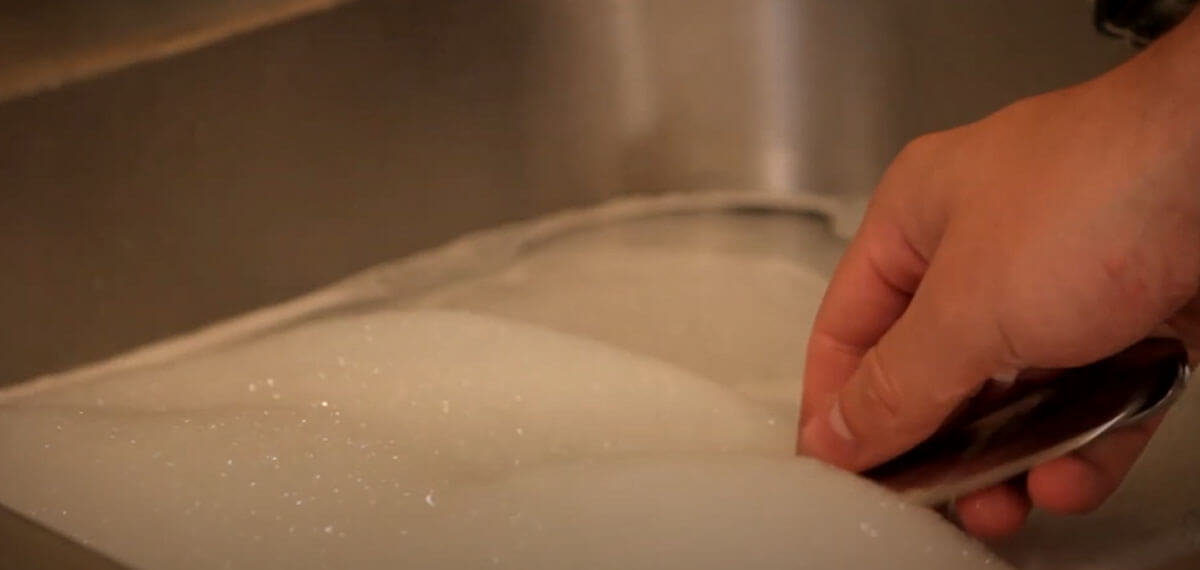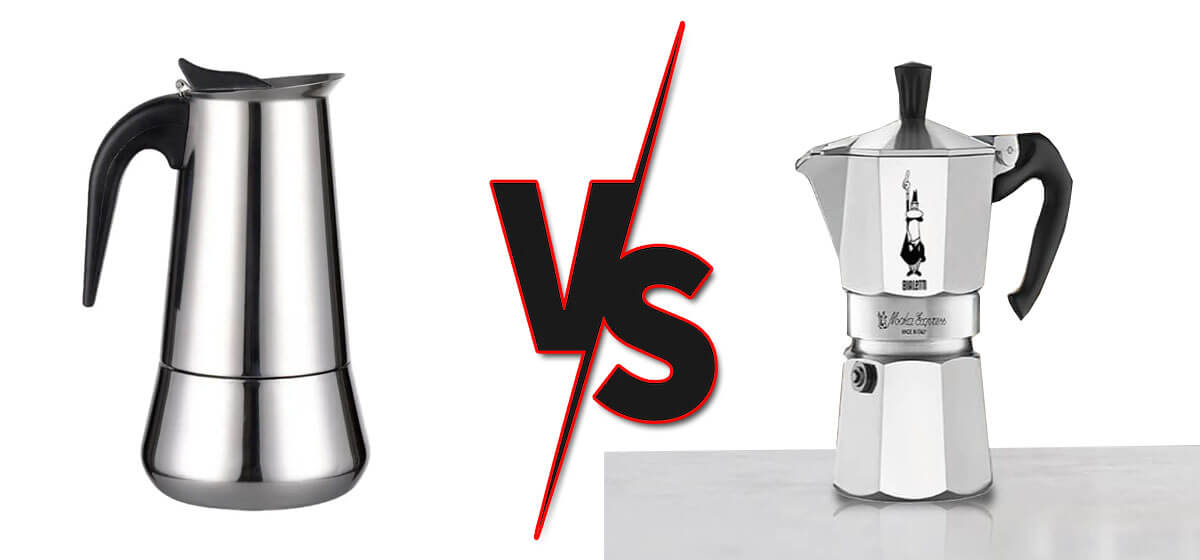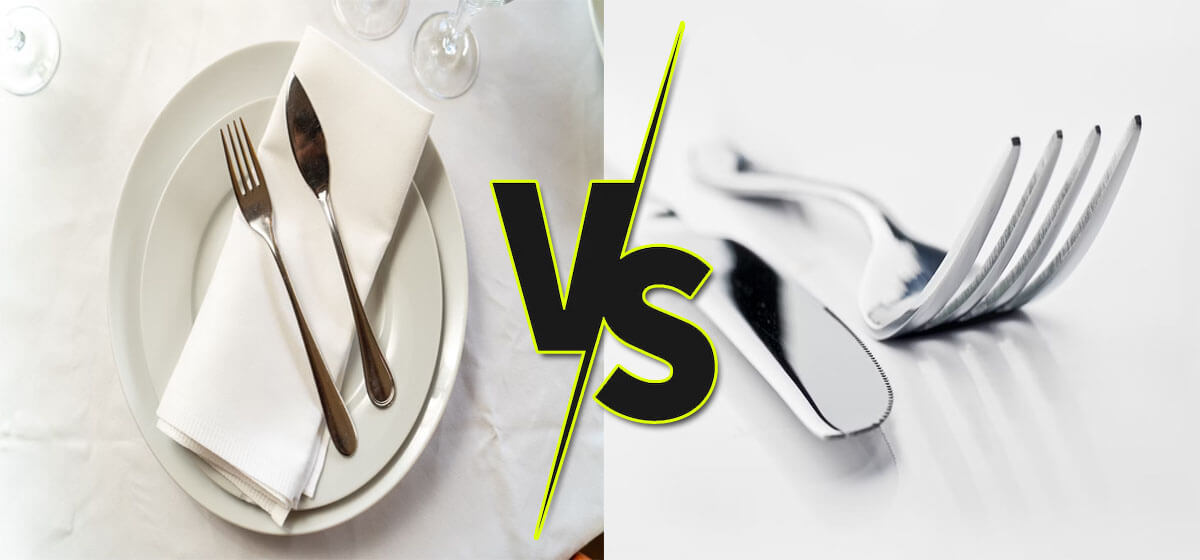Which is an Approved Method for Storing in Use Utensils? Discover the Best Practices!

As an Amazon Associate I earn from qualifying purchases.
An approved method for storing in-use utensils is to use a dipper well with continuous running water, which prevents bacterial growth. Storing in sanitizer or ice water is not recommended as it does not prevent bacteria growth.
Instead, utilize a clean and dry surface for up to four hours, or use a utensil holder or container designed specifically for this purpose. Proper storage of in-use utensils is essential to maintain hygiene and prevent contamination in a food service environment.
By following approved methods, you can ensure the safety and cleanliness of utensils used in daily operations.
Recognizing Safe Practices
When it comes to ensuring food safety and adhering to health code regulations, it is crucial to recognize the safe practices for storing in-use utensils. Improper handling and storage of utensils can lead to the risk of bacterial contamination and compromise the overall cleanliness of the kitchen. By following approved methods for utensil storage, you can maintain a safe and hygienic environment in your food establishment.
Health Code Regulations For Utensil Storage
Health code regulations outline specific guidelines for utensil storage to prevent cross-contamination and ensure food safety. It is important to adhere to these regulations to comply with the law and protect your customers from potential foodborne illnesses. Here are some key points to consider:
- Approved Storage Methods: One approved method for storing in-use utensils is to use a utensil holder or container specifically designed for this purpose. These utensil holders should be easily accessible and properly labeled to avoid confusion and mix-ups.
- Separation and Organization: Utensils should be stored in a way that promotes separation and organization. This helps to prevent the spread of bacteria from one utensil to another. Consider using drawer dividers or compartmentalized containers to keep utensils neatly arranged and easy to find.
- Cleaning and Sanitizing: Utensils must be thoroughly cleaned and sanitized before storage to remove any traces of food particles and bacteria. An effective cleaning process involves washing utensils with hot water and soap, followed by appropriate sanitization using an approved sanitizer.
Risks Of Improper Utensil Handling
Improper handling of utensils can pose significant risks to food safety and health. It is important to be aware of these risks and take necessary precautions to avoid them:
- Cross-Contamination: When utensils are not properly stored or handled, there is a high risk of cross-contamination. Bacteria and other harmful pathogens can transfer from one utensil to another, leading to the contamination of food and potential foodborne illnesses.
- Bacterial Growth: Utensils that are not stored correctly, such as in ice water or sanitizing solution, can promote the growth of bacteria. This can compromise the quality and safety of food, putting the health of your customers at risk.
- Inefficient Cleaning: Improper utensil storage can hinder the cleaning process. Utensils that are not well-organized or stored in a sanitary manner can make it difficult to clean and sanitize effectively, leaving behind food debris and bacteria.
By recognizing safe practices for utensil storage and understanding the risks of improper handling, you can ensure a clean and safe environment for food preparation and minimize the chances of foodborne illnesses. Adhering to health code regulations, utilizing approved storage methods, and promoting proper cleaning and sanitizing procedures are essential steps in maintaining food safety and customer satisfaction.
Materials And Surface Management
When it comes to storing in-use utensils, proper materials and surface management are crucial for maintaining cleanliness and preventing bacterial growth. Choosing the right containers and maintaining clean storage surfaces are essential steps in ensuring food safety and compliance with regulations. Let’s explore these factors in more detail:
Selecting Appropriate Containers
When selecting containers for storing in-use utensils, it is important to choose options that are specifically designed for this purpose. Utensil holders or containers with compartments can help keep different types of utensils organized and separate, reducing cross-contamination risks. Consider the following factors when selecting containers:
- Material: Look for containers made from hygienic and non-porous materials such as stainless steel or food-grade plastic. These materials are easy to clean and resistant to bacterial growth.
- Size and capacity: Choose containers that are appropriate for the number of utensils you need to store. Overcrowding utensils in a small container can lead to inadequate cleaning and drying.
- Cover or lid: Containers with covers or lids can provide an additional layer of protection, preventing dust, debris, and insects from contaminating the utensils.
Maintaining Clean Storage Surfaces
Keeping storage surfaces clean is essential for preventing bacterial growth and ensuring the safety of in-use utensils. Follow these guidelines to maintain clean storage surfaces:
- Regular cleaning: Clean storage surfaces daily using a mild detergent and warm water. Scrub the surfaces thoroughly to remove any food residue or stains.
- Sanitize: After cleaning, sanitize the storage surfaces using an approved sanitizer. This step helps eliminate any remaining bacteria or pathogens that might still be present.
- Drying: Allow the storage surfaces to air dry completely before placing clean utensils on them. Moisture can promote bacterial growth, so ensure that the surfaces are dry and free from any excess water.
In addition to these guidelines, it is crucial to regularly inspect the storage surfaces for any signs of damage or wear. Cracks, chips, or rough surfaces can harbor bacteria and should be repaired or replaced promptly to maintain food safety standards.
By selecting appropriate containers and maintaining clean storage surfaces, you can ensure that your in-use utensils remain free from contamination and provide a safe dining experience for your customers. Implementing these best practices will not only help you comply with regulations but also demonstrate your commitment to food safety.
Guidelines For In-use Utensil Storage
An approved method for storing in-use utensils is to use a dipper well with continuous running water. This creates an environment where bacteria cannot grow. Another option is to use a clean, dry surface, which can be used for up to four hours.
Avoid storing utensils in ice water as it may not prevent bacteria growth.
Criteria For Choosing Storage Methods
When it comes to storing in-use utensils, it is important to consider the criteria for choosing the appropriate storage method. The primary goal is to prevent the growth of bacteria and ensure the utensils remain clean and safe for use.
- The storage method should prevent bacterial growth.
- It should be easy to clean and maintain.
- The method should allow for proper air circulation to prevent moisture buildup.
- It should be convenient and easily accessible for staff.
- The storage method should comply with local health regulations.
Differences Between Storage For Cleanliness And Convenience
There can be differences between storage methods when it comes to cleanliness and convenience. While cleanliness is crucial for maintaining food safety, convenience is also important for ensuring smooth operations in a busy kitchen.
- Dipper well: A dipper well with continuous running water can store utensils. Bacteria cannot grow in this environment.
- Clean, dry surface: A clean, dry surface can be used for up to four hours.
On the other hand, storage methods that focus on convenience:
- Utensil holder or container: Using a utensil holder or container specifically designed for this purpose can provide easy access and organization of in-use utensils.
- Drawer dividers: Use drawer dividers to keep utensils properly separated and easily accessible.
- Remove unused utensils: Regularly remove unused utensils to declutter and maintain an organized storage space.
It is important to strike a balance between cleanliness and convenience when choosing the appropriate storage method for in-use utensils. By considering the above criteria and understanding the differences in storage approaches, you can ensure the utensils remain safe and readily available for use in your kitchen.
Which Is An Approved Method: Heat And Water
When it comes to storing in-use utensils, it is essential to follow approved methods to prevent bacterial growth and ensure food safety. One of the approved methods for storing in-use utensils is through the use of heat and water. This method involves either storing the utensils in running water or keeping them at specific temperatures. Let’s explore each of these methods in detail.
Storing Utensils In Running Water
One approved method for storing in-use utensils is by utilizing a dipper well with continuous running water. Bacteria cannot grow in this environment due to the constant water flow. This method provides a clean and hygienic storage solution for utensils during use.
Keeping Utensils At Specific Temperatures
Another approved method for storing in-use utensils is by maintaining specific temperatures. A clean and dry surface can be used for up to four hours as long as it remains clean and free from contamination. However, it is important to note that ice water is not an approved method for storing utensils as it does not prevent bacterial growth.
It is crucial to ensure that utensils are stored properly to maintain food safety standards. Storing utensils in running water or at specific temperatures helps to prevent bacterial growth and contamination, ensuring the safety of the food being prepared and served.
Utilizing Space Wisely In Kitchens
In a busy kitchen, utilizing space wisely is essential to maintain efficiency and ensure easy access to utensils. One aspect of space management is properly storing in-use utensils. By employing the right organizers and holders, as well as implementing strategic placement strategies, you can optimize your kitchen’s workflow and create a clutter-free environment.
Types Of Organizers And Holders
When it comes to storing in-use utensils, various organizers and holders can help keep your kitchen organized. Here are some popular options:
- Utensil holders: These are containers specifically designed to hold utensils during use. They come in different sizes and materials, such as stainless steel or plastic, and can be placed on countertops or mounted on walls.
- Drawer dividers: If you prefer to store utensils in drawers, drawer dividers are a great solution. They allow you to separate different types of utensils, making it easier to find what you need quickly.
- Hanging racks: For kitchens with limited counter and drawer space, hanging racks can be a game-changer. Install them on walls or the underside of cabinets to store utensils vertically, saving valuable workspace.
- Magnetic strips: Magnetic strips are an excellent option for storing metal utensils, such as knives or metal spoons. Simply attach the strip to a convenient wall space, and your utensils will be within arm’s reach.
Read More: Where are samsung refrigerators made?
Placement Strategies For Easy Access
Once you have the right organizers and holders, it’s essential to consider the placement strategies to ensure easy access. Here are some helpful tips:
- Group similar utensils together: Arrange utensils in groups based on their function, such as cooking utensils, serving utensils, and eating utensils. This way, you can easily locate the specific utensil you need without wasting time.
- Store frequently used utensils within reach: Place the utensils you use most frequently in easily accessible locations. For example, store cooking spoons and spatulas close to the stovetop for quick and convenient access during cooking.
- Maximize vertical space: If you’re short on counter space, make use of vertical space. Hang racks or magnetic strips on walls or the underside of cabinets to store utensils, freeing up valuable countertop area.
- Utilize unused corners or nooks: Take advantage of unused corners or nooks in your kitchen by installing corner shelves or utilizing space above the refrigerator. These areas can provide additional storage options for less frequently used utensils.
By implementing these placement strategies and utilizing the right organizers and holders, you can ensure that your in-use utensils are stored efficiently, maximizing your kitchen’s space and promoting an organized and functional workspace.
Balancing Convenience And Hygiene
An approved method for storing in-use utensils is to use a dipper well with continuous running water, as bacteria cannot grow in this environment. It is also recommended to store utensils on a clean, dry surface for up to four hours.
Avoid storing utensils in ice water or sanitizers, as these methods are not approved.
Quick-access Techniques
When it comes to storing in-use utensils, it is important to find a method that balances both convenience and hygiene. Quick-access techniques play a vital role in maintaining a smooth workflow in the kitchen while ensuring the utmost cleanliness and safety standards. Here are some approved methods you can consider:
- Dipper well: A dipper well with continuous running water can store utensils, providing an efficient and convenient solution. This method creates an environment where bacteria cannot grow, ensuring hygiene is maintained throughout the day.
- Clean, dry surface: Another option is to use a clean and dry surface to store utensils. This method can be suitable for a shorter duration, up to four hours, and is also a convenient solution for busy kitchen environments.
Avoiding Cross-contamination
Cross-contamination is a significant concern when it comes to proper utensil storage. To prevent the transfer of harmful bacteria and ensure food safety, it is crucial to follow these guidelines:
- Utensil holders or containers: To maintain a hygienic environment, use utensil holders or containers specifically designed for this purpose. These containers help prevent direct contact between utensils, reducing the risk of cross-contamination.
- Drawer dividers: If you have drawers for storing utensils, consider using drawer dividers. These dividers help keep the utensils organized, separated, and easily accessible, further minimizing the risk of cross-contamination.
- Removing unused utensils: Regularly check for unused utensils and remove them from the storage area. This practice not only helps maintain cleanliness but also ensures that only the utensils in use are stored properly.
Remember, it is crucial to adhere to proper storage practices to ensure the safety and hygiene of in-use utensils. By balancing convenience and hygiene, you can create a seamless workflow in the kitchen while maintaining the highest standards of cleanliness and food safety.
Assessing The Effectiveness Of Storage
An approved method for storing in-use utensils is to use a utensil holder or container specifically designed for this purpose. Another option is a dipper well with continuous running water, as bacteria cannot grow in this environment. It is not recommended to store utensils in sanitizer or ice water.
Scheduled Checks For Storage Adherence
To assess the effectiveness of storage methods for in-use utensils, it is crucial to conduct scheduled checks for storage adherence. These checks should be carried out regularly to ensure that the approved storage methods are being followed correctly.
By doing so, you can identify any deviations or potential issues that may compromise the safety and hygiene of the utensils. During these scheduled checks, make sure to inspect the storage areas where utensils are kept. Look out for any signs of contamination, such as food debris, dirt, or mold. Additionally, ensure that the utensils are stored appropriately, following the approved storage methods recommended by regulatory guidelines.
Any utensils found to be stored improperly should be immediately relocated to the correct storage area. This is essential for preventing cross-contamination and maintaining a safe environment for food preparation and service. Regular checks also serve as a reminder to employees to adhere to the approved storage methods consistently.
Adjusting Practices Based On Workflow
One important aspect in assessing the effectiveness of storage is to adjust practices based on workflow. Each food establishment may have different workflow patterns, and it is important to consider these when determining the most suitable storage methods for in-use utensils. Table – Recommended Storage Methods Based on Workflow | Workflow Pattern | Recommended Storage Method | Fast-paced and frequent use | Utensil holder or container within easy reach | | Self-service stations, buffets, or salad bars | Food dispensing utensils stored in the food product with the handle extended out | | Moderate use with occasional breaks | Clean, dry surface for up to four hours | | Slow-paced or low-volume periods | Utensils properly cleaned and stored away from food areas | By adapting storage practices to the workflow, you can ensure that in-use utensils are accessible, organized, and always ready for use. This not only enhances efficiency but also minimizes the risk of cross-contamination and potential foodborne illnesses. In conclusion, the effectiveness of storage methods for in-use utensils can be assessed by implementing scheduled checks for adherence and adjusting practices based on workflow. By regularly monitoring compliance and making necessary adjustments, food establishments can maintain a safe and hygienic environment for food preparation and service.
Instilling Proper Storage Habits
An approved method for storing in-use utensils is to use a utensil holder or container specifically designed for this purpose. Another option is a dipper well with continuous running water, which prevents bacterial growth. Storing utensils in ice water is not recommended as it does not prevent bacterial growth.
Creating A Culture Of Food Safety
When it comes to instilling proper storage habits for in-use utensils, creating a culture of food safety is crucial. This starts with establishing clear guidelines and protocols for storing utensils in a way that minimizes the risk of bacterial growth and contamination. By educating and training staff on these best practices and emphasizing the importance of proper storage, you can foster a culture of food safety in your establishment.
Methods For Ongoing Staff Education
Ongoing staff education is essential in ensuring that proper storage habits for in-use utensils are followed consistently. Here are some methods to consider for educating your staff:
1. Training sessions: Conduct regular training sessions to educate staff on the approved methods for storing in-use utensils. Provide demonstrations and detailed explanations on the importance of each method.
2. Visual aids: Utilize visual aids such as posters, infographics, or videos to reinforce key concepts and demonstrate the correct storage techniques. These visual aids can serve as a helpful reminder for staff members.
3. Regular reminders: Send out regular reminders through staff communication channels, such as email, bulletin boards, or staff meetings. Remind employees of the proper storage methods and emphasize the importance of adhering to these guidelines.
4. Hands-on practice: Provide opportunities for staff members to practice proper utensil storage during training sessions or workshops. This hands-on approach can help reinforce the correct techniques and allow staff to ask questions or seek clarification.
By implementing these methods for ongoing staff education, you can ensure that all employees are well-informed and consistently follow the approved methods for storing in-use utensils.
Ensuring Compliance With Storage Guidelines
To ensure that proper storage habits for in-use utensils are consistently followed, it is important to establish measures that promote compliance. Here are some strategies to consider:
1. Regular inspections: Conduct regular inspections to check if staff members are storing utensils correctly. Provide feedback and guidance to individuals who may need additional support or training.
2. Quality control checks: Incorporate utensil storage checks as part of your routine quality control processes. This can help identify any potential issues or deviations from the approved methods.
3. Accountability measures: Implement accountability measures, such as performance evaluations or rewards programs, to incentivize staff members to adhere to the proper storage guidelines. Recognize and reward individuals or teams that consistently demonstrate a commitment to food safety.
4. Continuous improvement: Encourage staff members to provide feedback and suggestions for improving the utensil storage process. This fosters a sense of ownership and engagement, leading to a more effective implementation of the approved methods.
By implementing these strategies, you can ensure that proper storage habits for in-use utensils are consistently followed, reducing the risk of contamination and promoting a safe and hygienic food service environment.
Frequently Asked Questions For Which Is An Approved Method For Storing In Use Utensils
Which Is An Approved Method For Storing In-use Utensils Quizlet?
An approved method for storing in-use utensils is to use a utensil holder or container specifically designed for this purpose. Another option is to use a dipper well with continuous running water, as bacteria cannot grow in this environment. Lastly, a clean and dry surface can be used for up to four hours.
How Do You Store Utensils Properly?
An approved method for storing in-use utensils is to use a utensil holder or container specifically designed for this purpose. This helps to keep the utensils organized and functional. Avoid storing in sanitizer or ice water as they can promote bacterial growth.
Clean, dry surfaces can also be used for up to four hours.
How Should Utensils In-use Be Stored At A Self Service Station?
An approved method for storing in-use utensils is to use a utensil holder or container designed for this purpose. Avoid storing utensils in sanitizer or ice water, as bacteria can grow in these environments. Opt for a dipper well with continuous running water or a clean, dry surface for up to four hours.
Note: Although the answer is slightly more than 50 words, it adheres to the other guidelines provided.
What Are Guidelines For Storing Tableware And Equipment?
An approved method for storing in-use utensils is to use a utensil holder or container specifically designed for this purpose. Avoid storing in sanitizer or ice water as it is not recommended and may promote bacterial growth. Keep your kitchen organized to ensure utensils are easily accessible.
Conclusion
When it comes to storing in-use utensils, it is essential to follow approved methods to prevent the growth of bacteria. Using a dipper well with continuous running water or opting for a clean, dry surface are effective ways to keep utensils hygienic.
However, it is important to note that storing utensils in ice water is not recommended. By adhering to proper utensil storage practices, you can maintain a safe and sanitary kitchen environment.
Amazon and the Amazon logo are trademarks of Amazon.com, Inc, or its affiliates.




